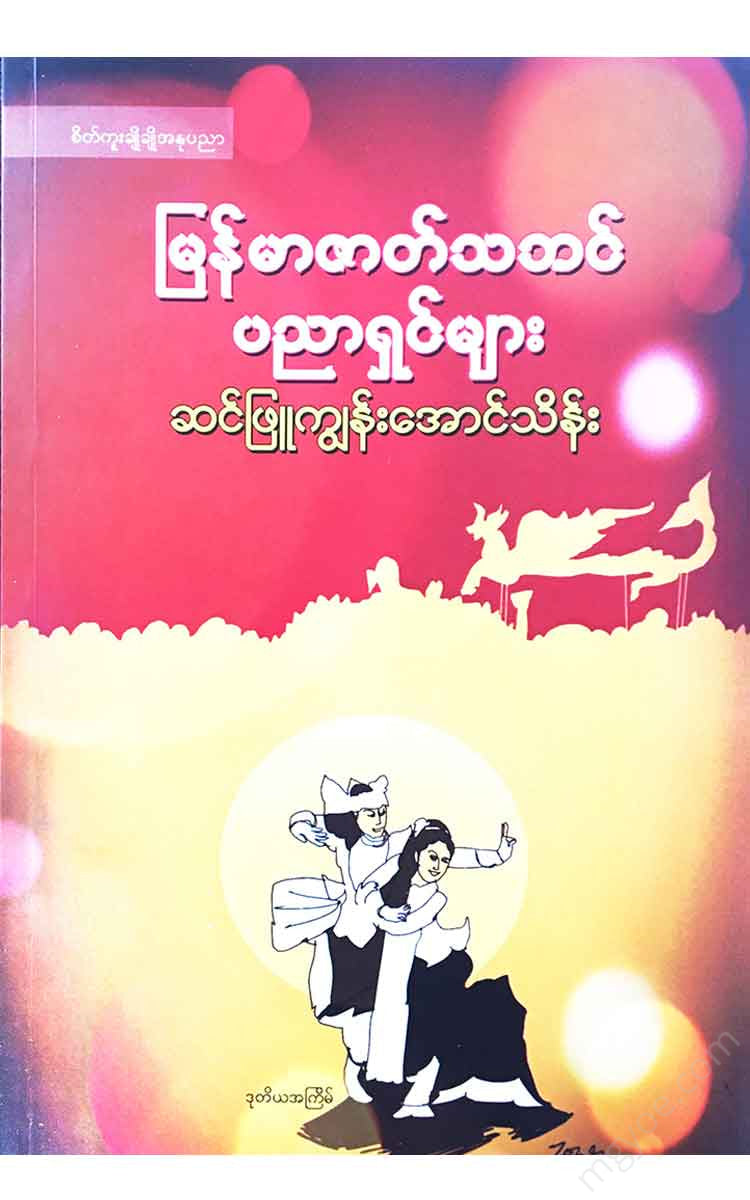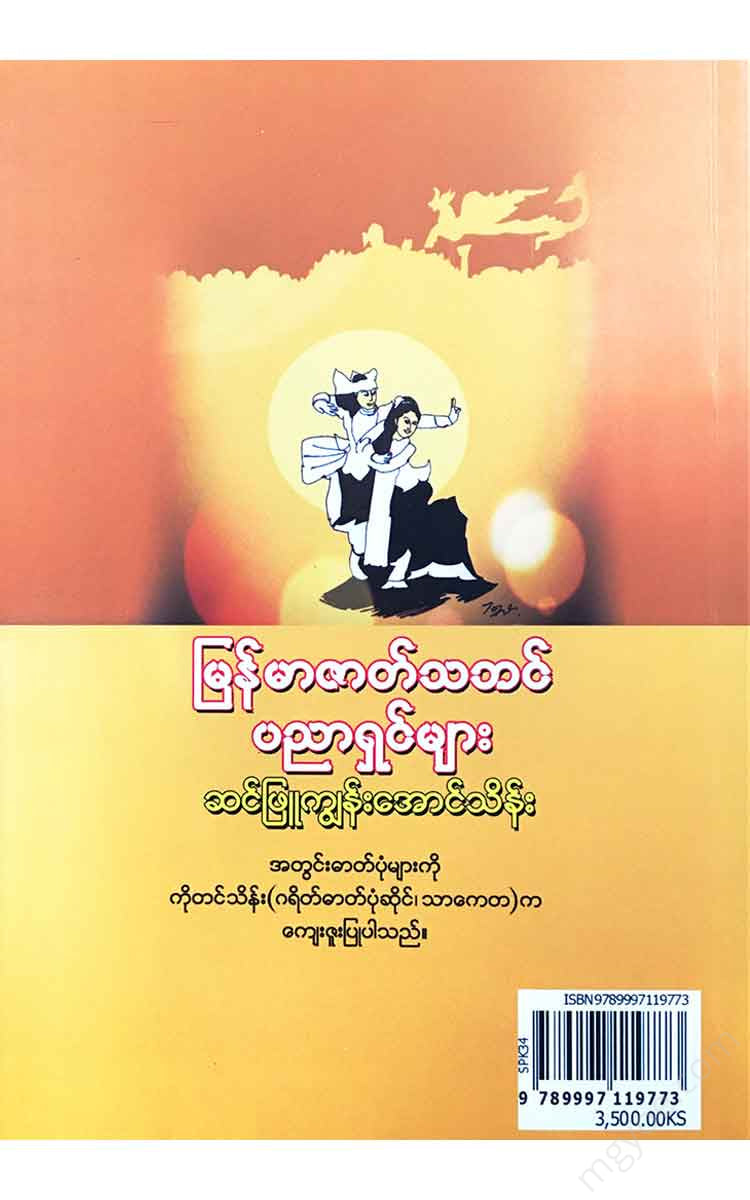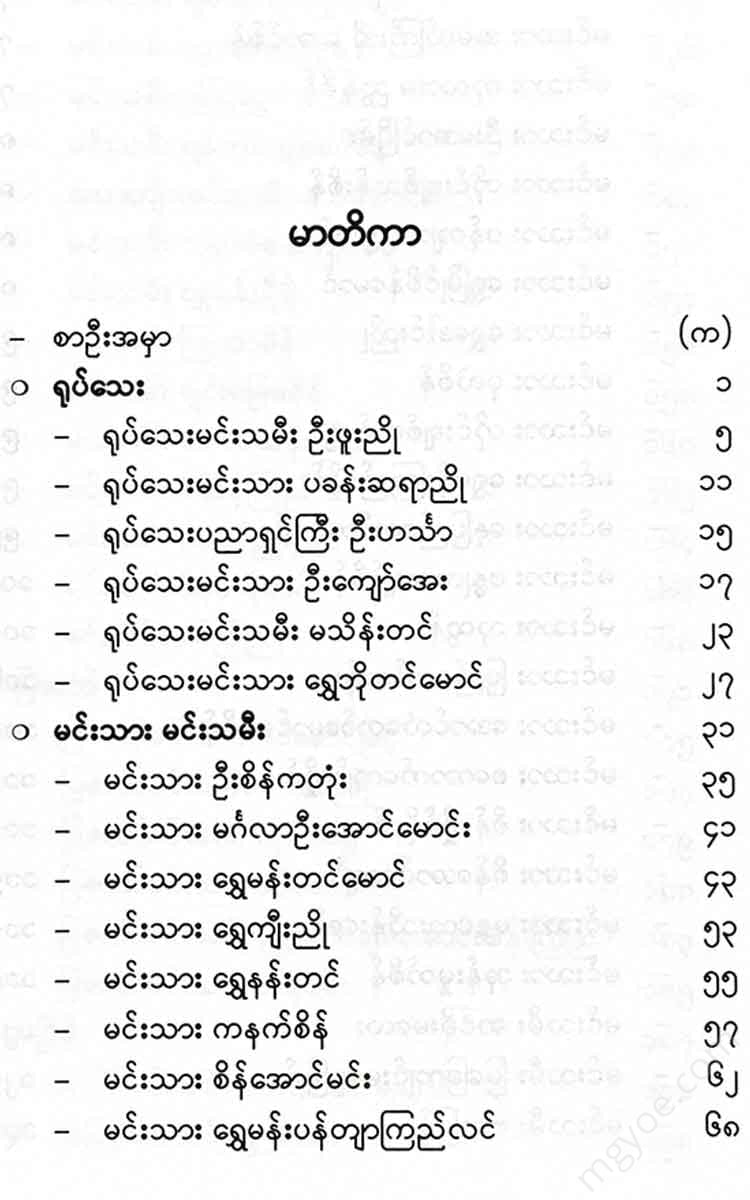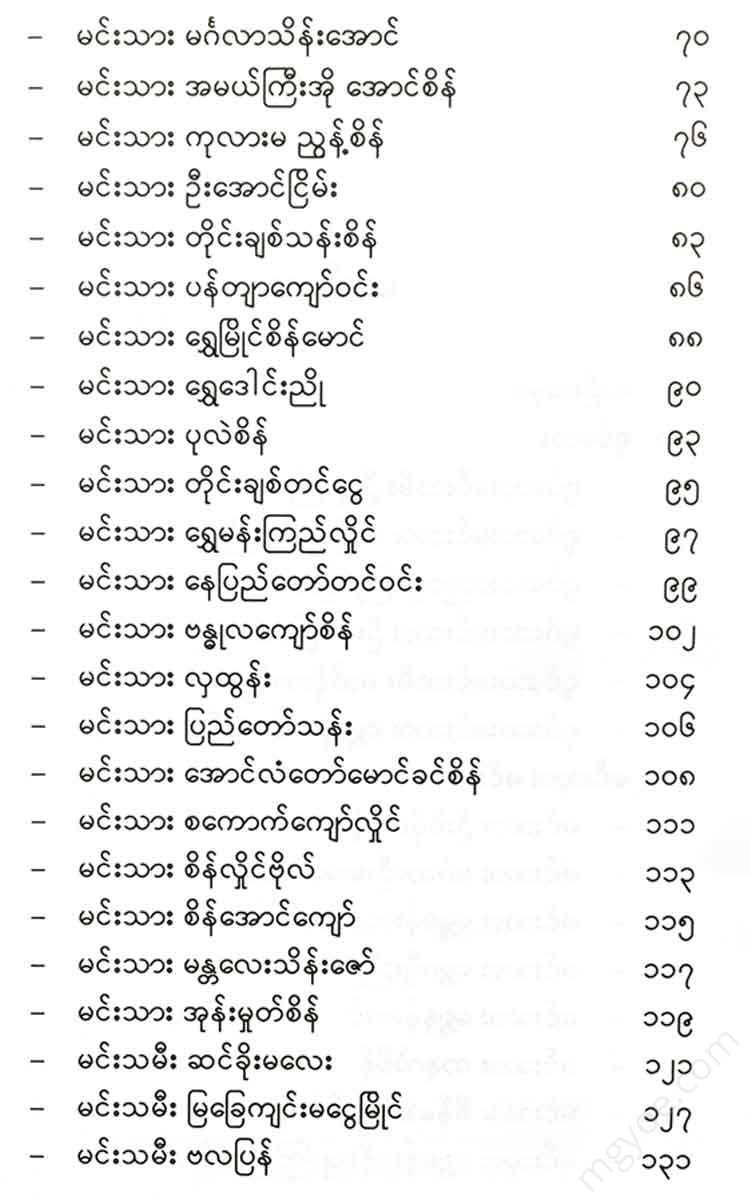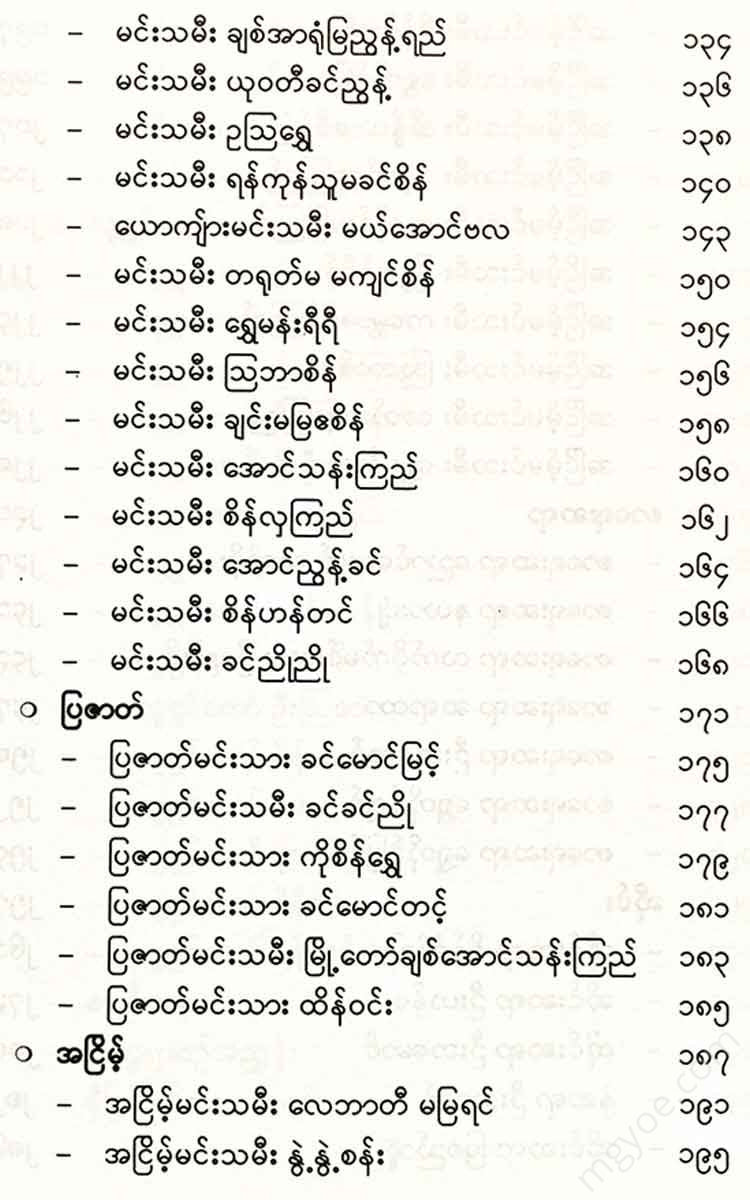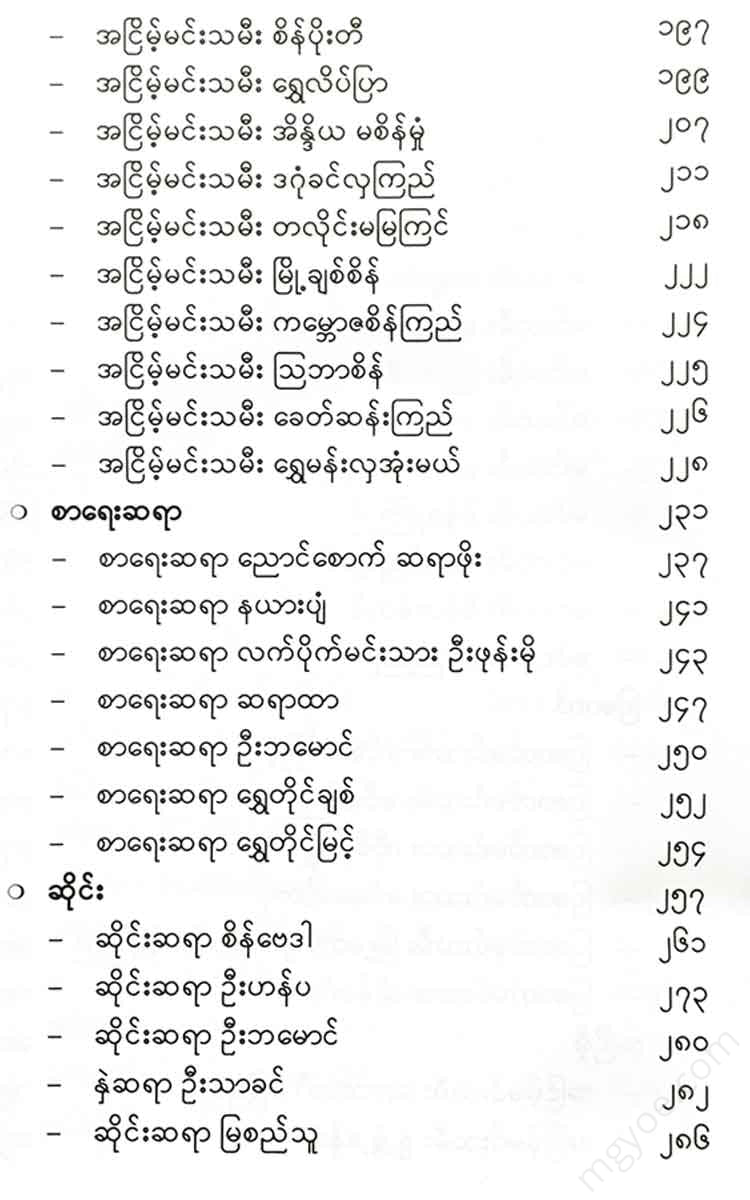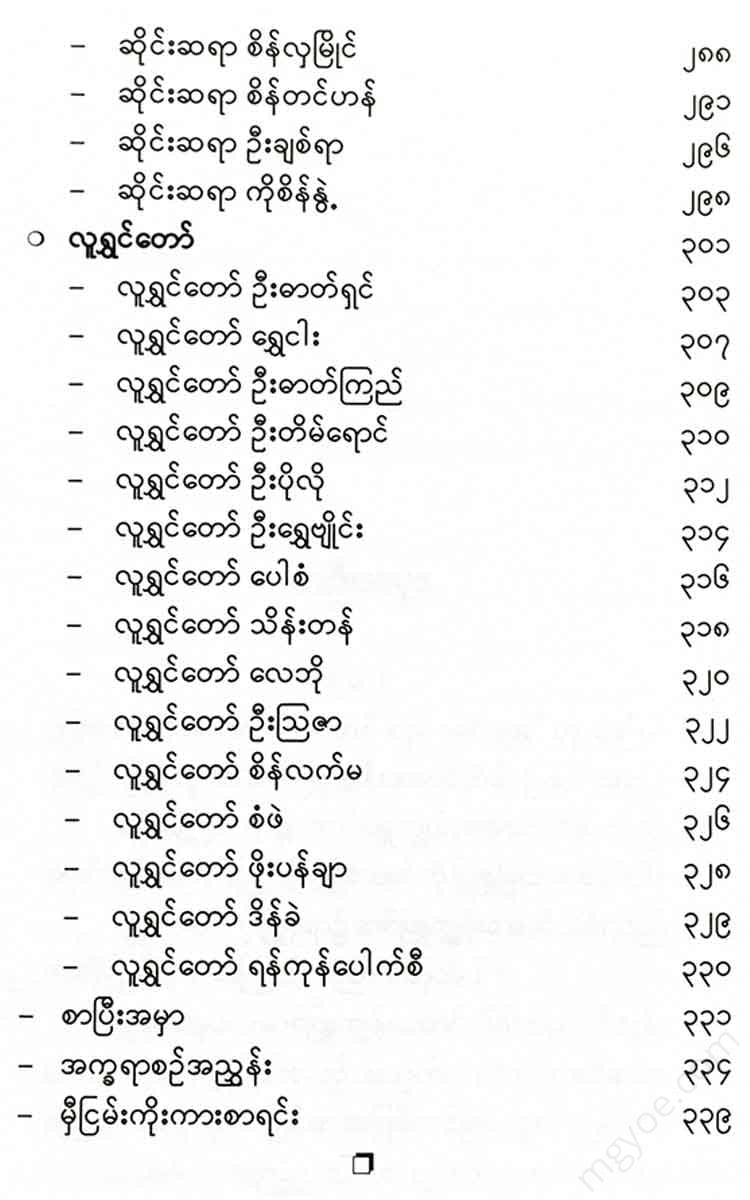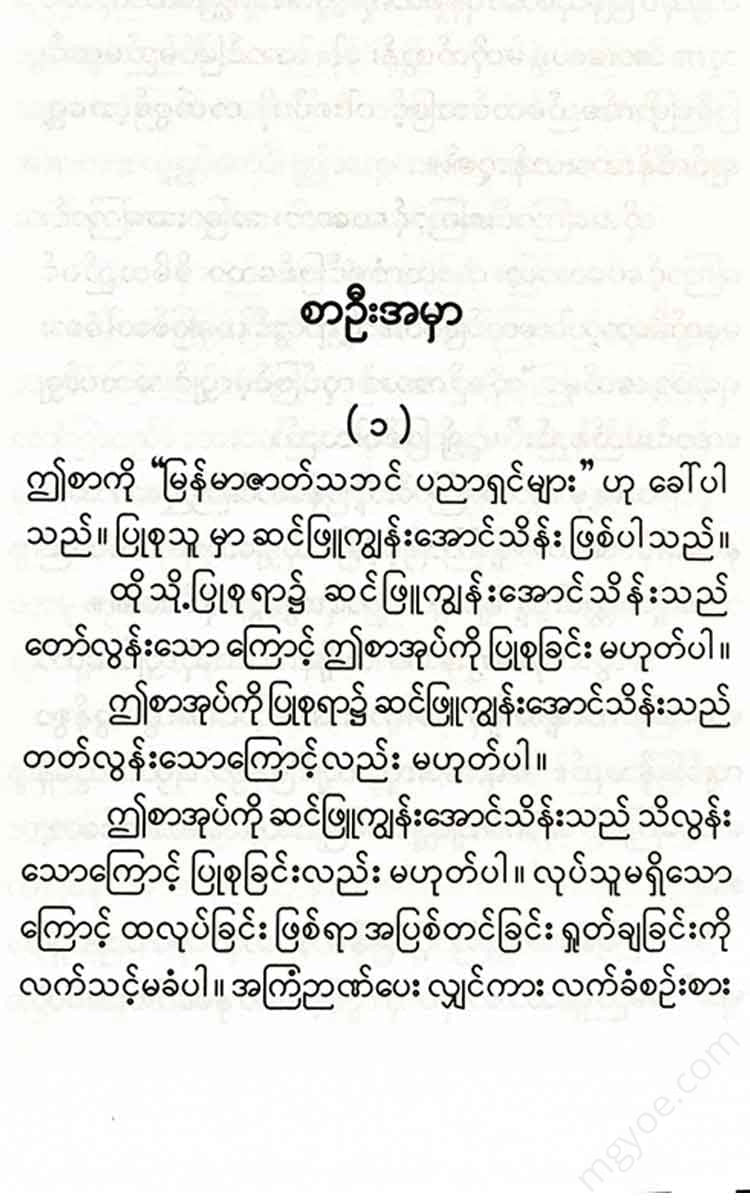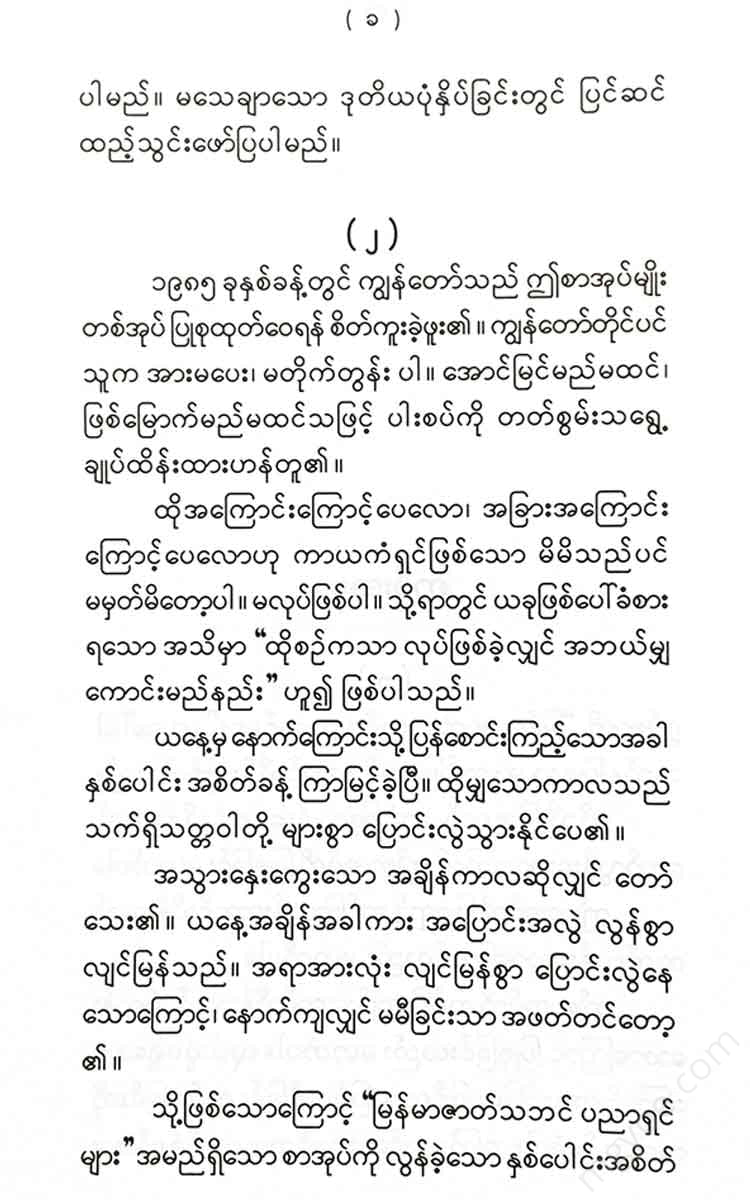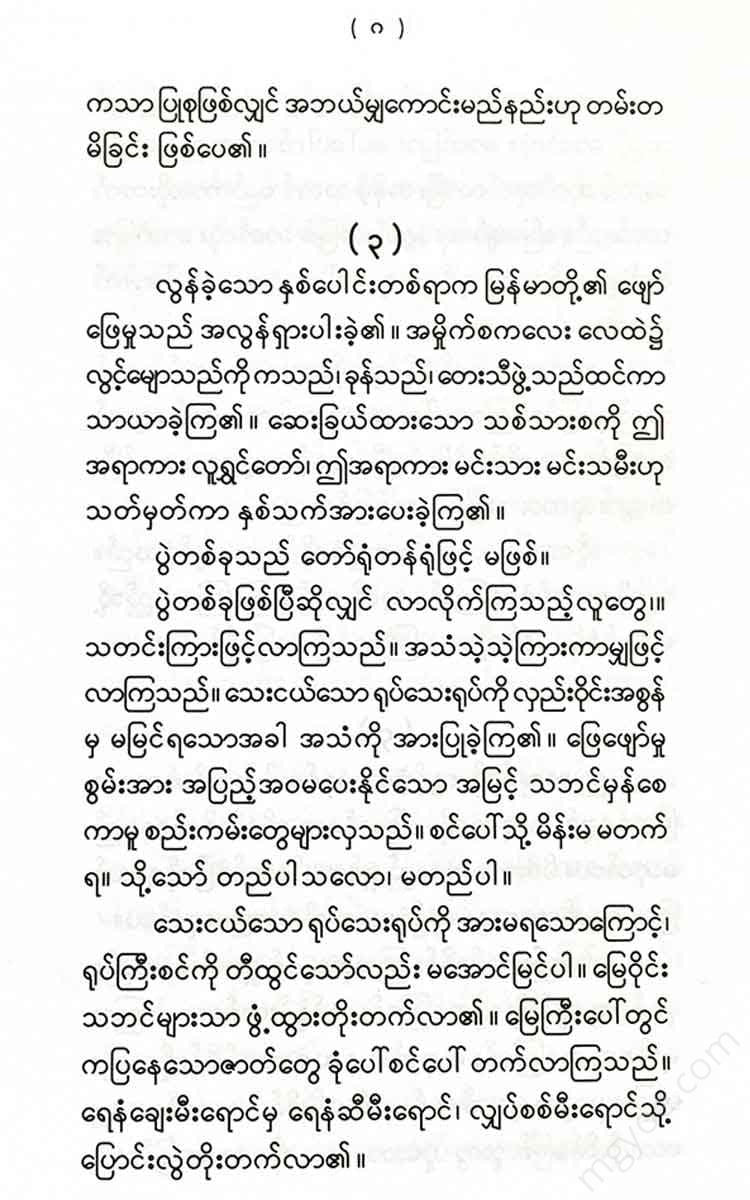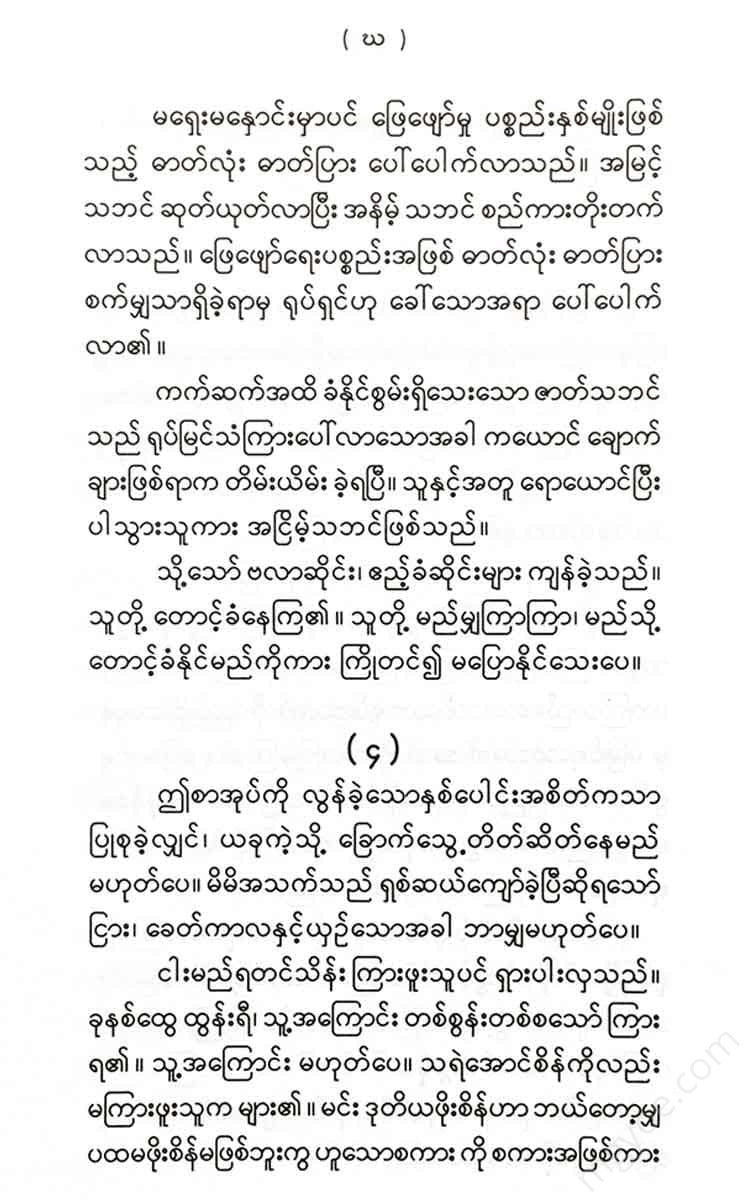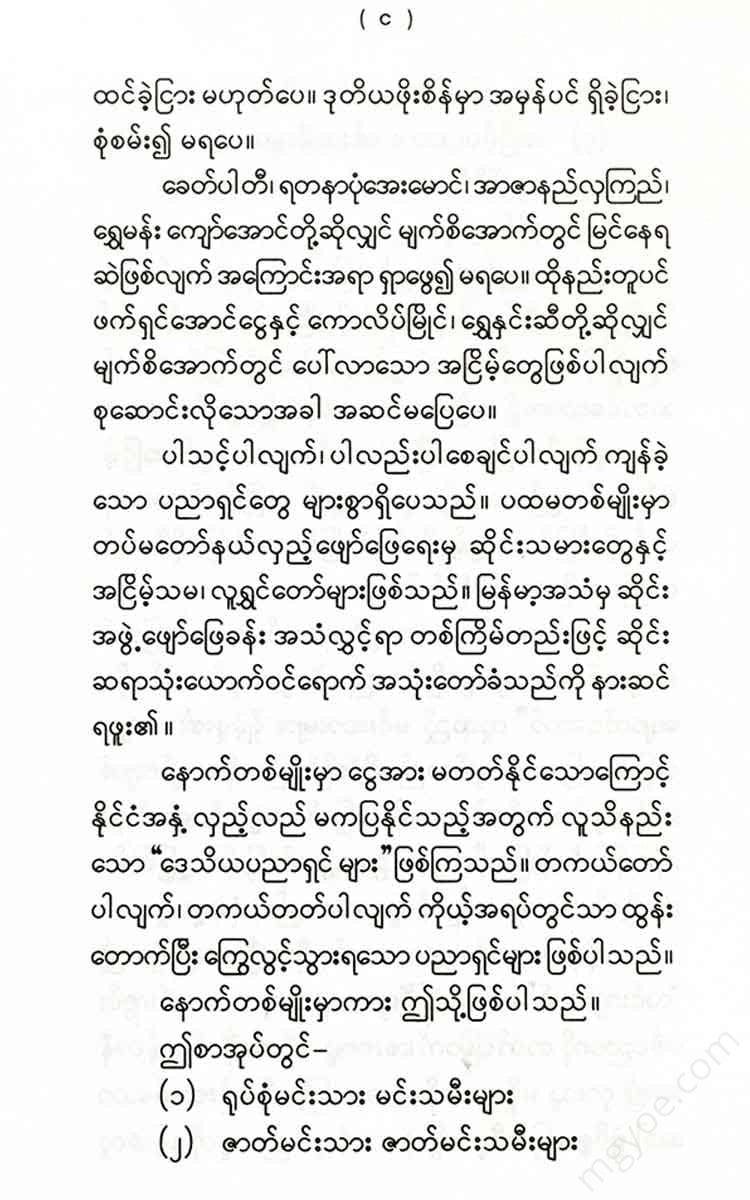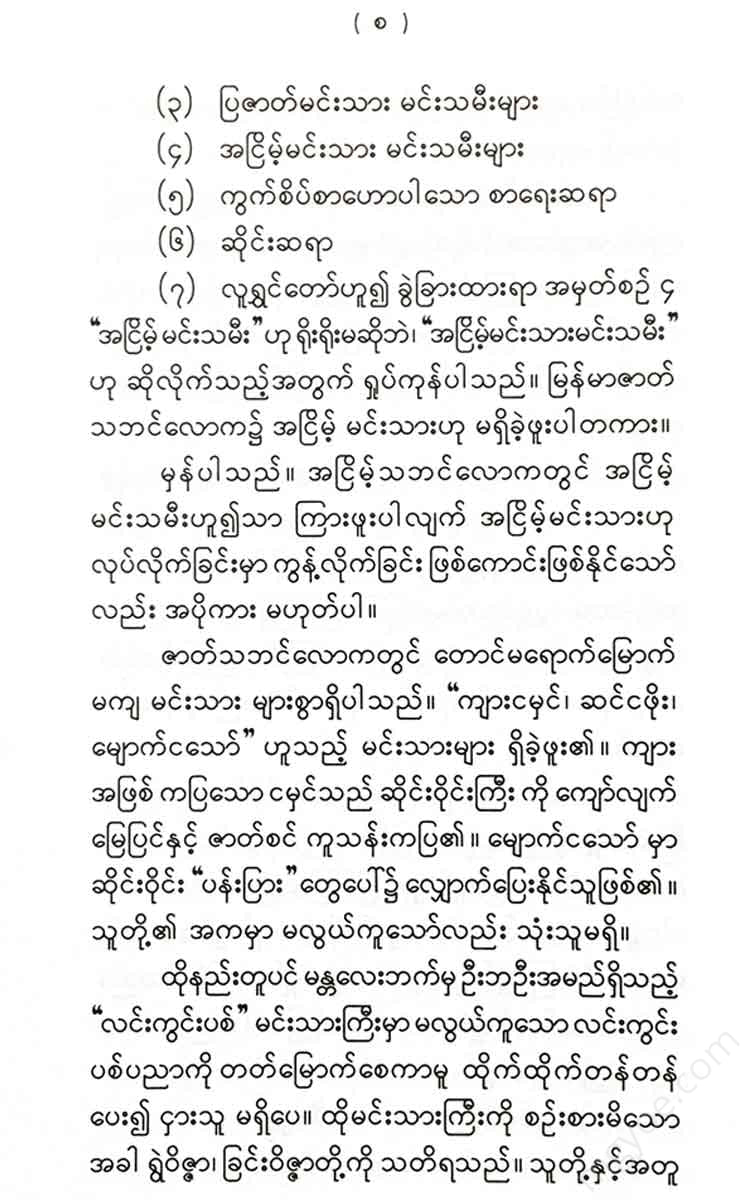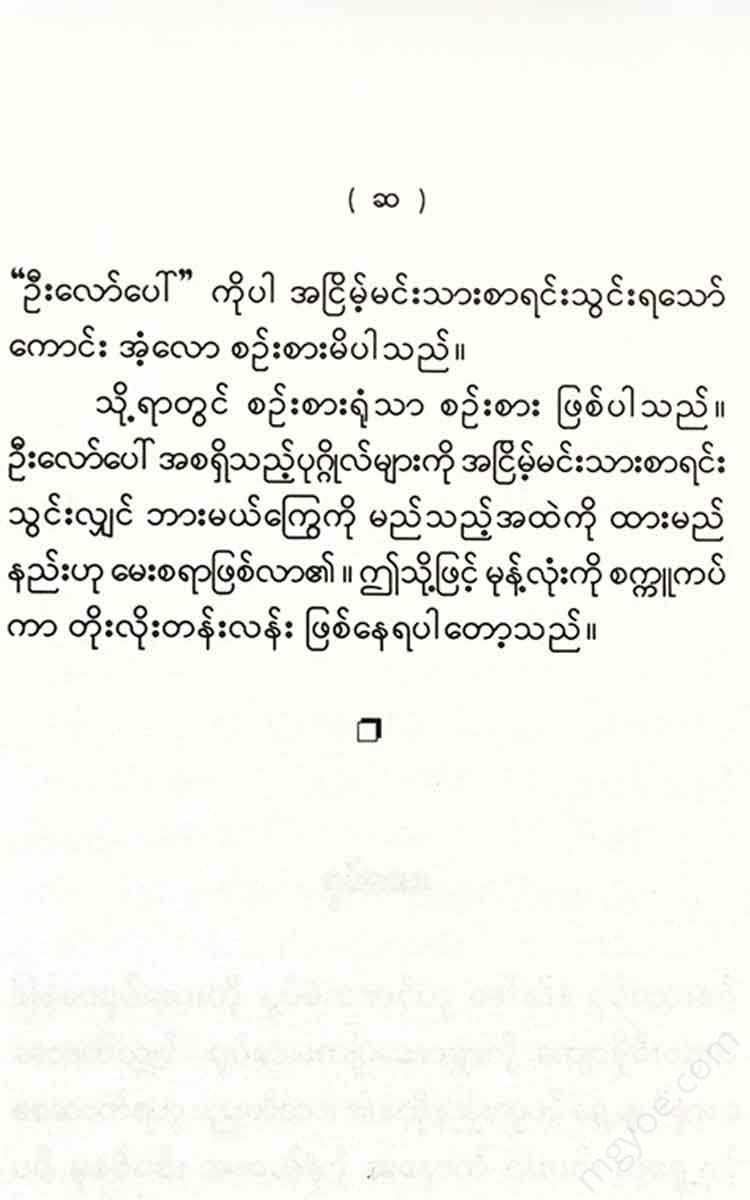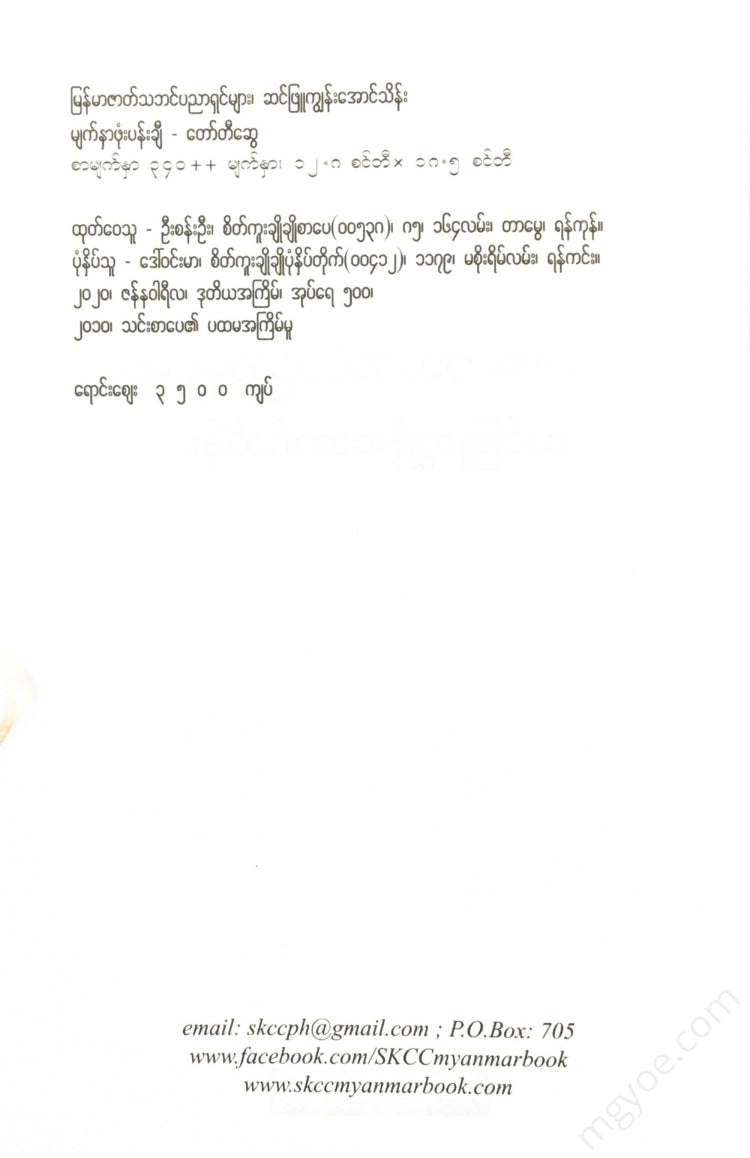စိတ်ကူးချိုချိုစာပေ
Sinphyu Kyun Aung Thein - Burmese historical scholars
Sinphyu Kyun Aung Thein - Burmese historical scholars
Couldn't load pickup availability
Puppet
Burmese puppetry is called a puppet show.
It is prescribed that if a puppet stage is built, it must not be built with its back to the village where the puppet is performing. Similarly, it is prescribed that there must be seven trees in the front, five trees in the middle and back, and 20 feet east and west.
There are at least 28 puppets in a Burmese puppet show. The puppets were stored in palm-leaf baskets in ancient times, and in modern times in wooden boxes. When stored in this way, they were separated into valuable and inferior.
The inferior figures stored in the left palm are clowns, monsters, elephants, horses, tigers, and elephants. The superior figures stored in the right palm are monks, hermits, kings, princes, princes, princes, sikhs, and Brahmas. The person who keeps these figures is called the custodian.
The making of these puppets is a complex process. The opening ceremony of the box is held and the puppets are fed. When the puppet show begins, it begins with the “Natkan To Aka” dance. It means that the puppets are being defeated and defeated. Only after this dance does the Himalayas enter the room.
In the Himawat Khan, elephants, horses, monkeys, tigers, Zawgyi, and belu dances were performed, which was very popular with the children. Although the show was child-friendly, the Himawat Khan was the best. The audience watched the Zawgyi dance and the best rope on the stage.
After the Himalayas, the ministers and kings came out to discuss the Dhamma. The trumpeter came out and spoke about national affairs. In the Hluttang, they discussed the laws, the Dhamma, the world, and the Dhamma. By listening to the tone of the ministers and kings, one can judge the wisdom of that monk.
Women were not allowed on the puppet stage. When only men could act as women, the speeches of puppeteer U Phu Nyo and puppeteer Pakhan Say Nyo were so valuable to young people that they encouraged them to go and see the puppets.
However, puppetry cannot resist or destroy the advancing era. It is worse in countries where the arts are less resilient. In Myanmar, puppetry and other arts are in decline, and the Ministry of Culture is under constant supervision.
Puppet actress U Phu Nyo
U Phu Nyo, who was called the puppet princess because she had to sing for the princess doll, was a native of Nat Gyi Village, Ngan Zun Township. There was no Thabin in her family. Maung Phu Nyo was born to U San and Daw Min Aye, who lived in that village, on Thursday, the 7th day of the full moon of Tapot Do, 1233, Burmese calendar.
U Phu Nyo, a puppeteer who became famous in the high drama world 150 years ago, was awarded the title of “Marutsaddash Shwe Taw Kyaw Swar” by King Thibaw in 1243, at the age of 20. She was also given the title of “Seven-Pin Sing Pao” (Seven-Stage Stage) in the title of “Seven-Stage Stage”.
The puppet princess U Phu Nyo worked for her parents from the age of 15 to 24. She gave all the money she earned from the puppetry to her parents. In the Nayon month of 1247, four months before King Thibaw was taken prisoner by the enemy, the puppet princess U Phu Nyo had an affair with Makho, the daughter of U So and Daw Saga from Natgyi village where she lived.
The forty-five years after the death of the two masters were a time of great drama. Therefore, U Phu Nyo's puppet troupe descended to the lower villages with more than 30 disciples. The drama of the Buddha's teacher U Pho Sein also began to gain momentum. Not only was it competitive with that drama, but the admission fee was also equal to one-eighth (half of one kyat). It was only because of the great influence of the puppeteer U Phu Nyo that she was able to compete with the great Pho Sein.
He taught the audience with a lot of crying, not to be angry, but to be compassionate and compassionate. He told them things to remember and follow in the room. But it was not a lesson, it was just a cry after reciting.
Some of the roles U Phu Nyo performed as a puppeteer include:
(1) Vanna Thi
(2) Sandakumara
(3) Rajataman
(4) Zinnia
(5) Just start over.
(6) Saddayuvati
(7) Maung Kway Mae Ra etc.
The puppeteer U Phu Nyo often pairs with the male actor U Sein Kho in the two-part drama. During the time of Thabin Wun U Thaw, the actor led the puppets. However, during the time of U Phu Nyo, the puppeteers took over the leading roles. During that time, U Phu Nyo's rivals and rivals were U Ba Kyawt and Mandalay Saya Pu, and Wan Pyae U Po Wun.
“The old man, the old man, is a poet, and he sings in the four corners of the earth. He is a poet. He is twenty years old, and he is a true poet, and he is more than twenty-five years old, and he is a poet
This is one of the many songs by U Phu Nyo that captivates the audience with his captivating voice.
The puppeteer U Phu Nyo is a literary enthusiast who is skilled in studying the Buddha and the Mahavin. She is also financially well-off and can do without alms. Therefore, as a blessing from U Phu Nyo, she became a monk in the village of Zartinatgyi.
There are schools, two monasteries, a monastery, and wells.
U Phu Nyo is dark-skinned, about 5 feet 3 inches tall. He has a slender build and walks gracefully. He carries a stick. His clothing consists of a long, pink robe, a red-brown silk robe, and brown sandals.
The puppeteer U Phu Nyo is a bald head. She wears a headscarf and a headscarf. Her headscarf is usually pink. She likes black and white silk and sleeps in a blanket regardless of the season. Regarding food, she eats pork occasionally but never eats beef. The famous puppeteer used the saying "a thousand good men and a thousand wives" and married three times. She left a will before her death, which clearly shows that she had an influence on her children.
Among the prominent puppeteers of his time were:
(1) Ko Shwe Lone, a cloth-covered man
(2) The swordsman Ko Nyo Moi
(3) The great Koko Gyi
(4) New Year's Eve
(5) Sayar Hlaing
(6) Teacher Rai
(7) U Thar Pyaaw
(8) Ohn Khaing
(9) Ko Phoe Nyan
(10) Ko Bokun
(11) Ko Kyaw Gyi etc.
The puppeteers
(1) U Chin Kang
(2) Ko Bee Hive
(3) Arrow
(4) Ko Pauk Sain
(5) Ko Pauk Tu
(6) Ko Nyo Moi
(7) Ko Shan Kyu
(8) U Patu
(9) Teacher
(10) Teacher
(11) Teacher
(12) U Mu
(13) U Tha San
(14) Teacher
(15) Teacher Rai
(16) Ko Pu
(17) Ko Bo Wan
(18) Koba Kaley
(19) Ko Thant and others.
U Phu Nyo was as good at singing as he was at speaking. As well as being good at speaking, his words were also full of knowledge. After King Thibaw fell to the enemy, the high-profile performances were supported by the audience for a long time. When the phonograph became widespread, U Phu Nyo even recorded some of his plays. During U Phu Nyo's time, the only person who could compete with U Phu Nyo was the male actress Aung Bala. U Phu Nyo, a puppet actress who had once shone, died in 1291 at the age of 68.
U Phu Nyo was a good speaker. His words contained many lessons and advice, so his children liked him. Even at low and high festivals, there were rare occasions, so the influence of the puppet, U Phu Nyo, had a great impact on the audience.
With the overwhelming influence of international culture, even small puppet shows, let alone theatrical performances, are on the verge of disappearing.
